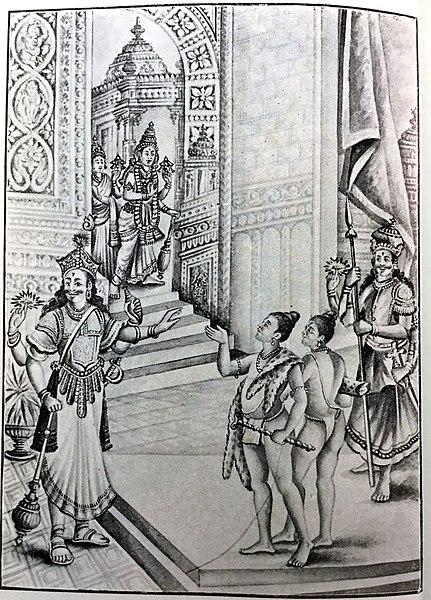In Hinduism, Jaya and Vijaya are the two dvarapalakas (gatekeepers) of the abode of Vishnu, known as Vaikuntha. Due to a curse by the four Kumaras, they were forced to undergo multiple births as mortals who would be subsequently killed by various avatars of Vishnu. They were incarnated as Hiranyakashipu and Hiranyaksha in the Satya Yuga, Ravana and Kumbhakarna in the Treta Yuga, and finally Shishupala and Dantavakra in the Dvapara Yuga.
Jaya and Vijaya prevent the passage of the Kumaras
Statue of Vijaya at the entrance of the Jagannath Temple, Puri
Image: Statue of Jaya, one of the gatekeepers of Vaikuntha
Image: Statue of Vijaya, one of the gatekeepers of Vaikuntha
A Dvarapala or Dvarapalaka is a door or gate guardian often portrayed as a warrior or fearsome giant, usually armed with a weapon - the most common being the gada (mace). The dvarapala statue is a widespread architectural element throughout Hindu, Buddhist, and Jaina cultures, as well as in areas influenced by them like Java.
Sondani, two Dvarapalas, circa 525 CE.
One of two pairs of dvarapala, 9th century Buddhist temple of Plaosan, Java, Indonesia.
Dvarapala in Elephanta India.
The largest dvarapala stone statue of Java, Singhasari period.








